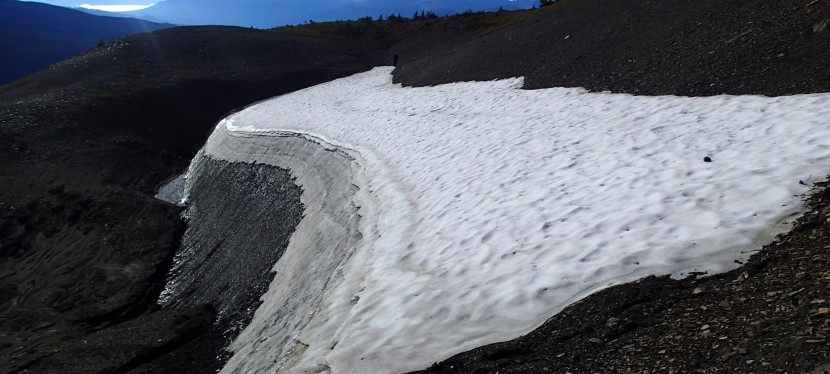Written by: Todd Kristensen, Archaeological Survey of Alberta
Jasper National Park and Willmore Wilderness Park include some of the most rugged and remote mountains in Alberta; and for over 10,000 years, people have called these places home. A high alpine pass at the north edge of Jasper and south edge of Willmore holds clues of an important resource that ancient people visited year after year, in a place that nowadays only hardy back-packers and horseback visitors can reach.
Glacier Pass contains a quarry of stone that people used to make spear heads, knives, scrapers and other tools. The quarry was discovered by archaeologists B.O.K. Reeves and J. Elliot in the early 1970s. The rocks found there are what geologists call ‘concretions’ that were picked up as rounded cobbles by people long ago. Recent archaeological research tells us that the round rocks were then hammered to get rid of certain pieces and expose the best quality stone for making tools.


Based on the number of artifacts found by archaeologists, Glacier Pass was likely visited by small groups of people thousands of times over thousands of years. The stone quarry was part of a seasonal round when people moved from month to month to different areas to exploit or target different things. The alpine concretions at Glacier Pass were probably collected after the snow melted in summer or in fall when people hunted big game animals on high slopes like sheep and caribou.

Modern visitors to Glacier Pass are unlikely to see tools: most of the artifacts there today are flakes of rock that people broke off while making stone tools. Almost all the finished products were carried away from the area. Visitors are reminded to respect the story of parks and mountain landscapes in Alberta by leaving all artifacts and rocks in place for others to experience. And remember that the land under our feet has a deep history full of geological wonders and human adaptations.









